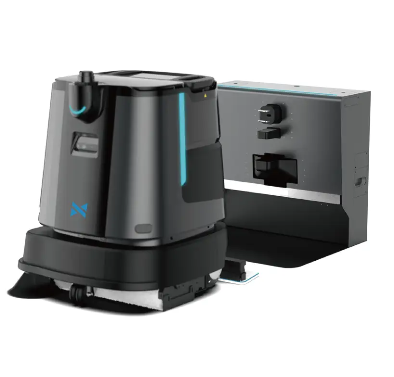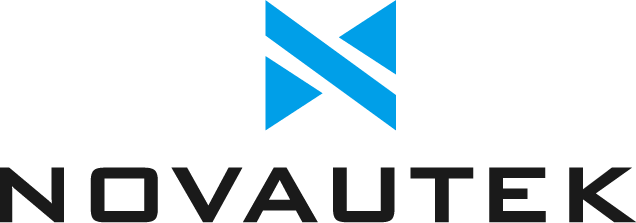The Rise of Advanced Robotics in Modern Industry
The integration of intelligent robots into various sectors has fundamentally transformed how businesses operate and innovate. These sophisticated machines, powered by artificial intelligence and advanced sensors, are revolutionizing workflows across manufacturing, healthcare, logistics, and numerous other industries. As organizations worldwide embrace automation technologies, intelligent robots are becoming increasingly central to achieving operational excellence and driving unprecedented levels of productivity.
Transforming Manufacturing Operations
Precision and Consistency in Production
Intelligent robots have redefined manufacturing precision standards. These advanced systems can perform intricate tasks with microscopic accuracy, maintaining consistent quality levels that surpass human capabilities. In automotive manufacturing, for instance, intelligent robots handle everything from welding and assembly to quality inspection, ensuring each vehicle meets exact specifications without variation.
The implementation of intelligent robots in production lines has led to dramatic reductions in error rates and material waste. These systems can operate continuously without fatigue, maintaining peak performance levels throughout extended production runs. This consistency not only improves product quality but also significantly reduces the costs associated with defects and rework.
Adaptive Manufacturing Solutions
Modern intelligent robots possess remarkable adaptability, allowing them to adjust their operations in real-time based on environmental changes and production requirements. Through advanced machine learning algorithms, these systems can optimize their movements and processes, leading to improved efficiency and reduced cycle times.
The adaptive capabilities of intelligent robots extend to collaborative scenarios, where they work alongside human operators in shared spaces. These cobots can adjust their speed and force based on proximity to humans, creating safe and efficient hybrid workspaces that maximize the strengths of both human and robotic workers.
Enhancing Workplace Safety and Efficiency
Risk Reduction in Hazardous Environments
One of the most significant advantages of intelligent robots is their ability to operate in dangerous or hazardous conditions. In chemical processing plants, mining operations, and other high-risk environments, these machines can perform critical tasks while keeping human workers safely removed from potential dangers.
These robots are equipped with sophisticated sensors and safety protocols that allow them to navigate hazardous areas while maintaining optimal performance. Their deployment in dangerous environments has led to substantial reductions in workplace accidents and associated costs, while simultaneously improving operational efficiency.
Streamlined Workflow Integration
Intelligent robots are increasingly being integrated into existing workflow systems, creating seamless operations that optimize resource utilization. These systems can communicate with other automated equipment and management software, enabling real-time coordination and adjustment of production schedules.
The integration capabilities of modern robots extend beyond simple task execution to include predictive maintenance, quality control, and inventory management. This comprehensive approach to automation helps organizations achieve higher levels of operational efficiency while reducing downtime and maintenance costs.

Driving Innovation Through Data and Analytics
Advanced Data Collection and Analysis
Intelligent robots serve as valuable data collection points, continuously gathering information about their operations and environment. This wealth of data provides unprecedented insights into production processes, enabling organizations to identify optimization opportunities and predict potential issues before they occur.
Through sophisticated analytics platforms, the data collected by intelligent robots can be transformed into actionable intelligence. This information helps organizations make informed decisions about process improvements, maintenance scheduling, and resource allocation, leading to more efficient and profitable operations.
Continuous Process Improvement
The implementation of intelligent robots creates a foundation for continuous process improvement. These systems can learn from their experiences and adapt their behavior to optimize performance over time. As they collect and analyze operational data, they can identify patterns and trends that might be invisible to human observers.
Organizations leveraging intelligent robots for process improvement have reported significant gains in productivity and quality. The combination of precise execution and data-driven optimization creates a powerful platform for ongoing operational enhancement and innovation.
Future Prospects and Industry Evolution
Emerging Technologies and Capabilities
The capabilities of intelligent robots continue to expand with advances in artificial intelligence, sensor technology, and materials science. Next-generation robots are expected to feature enhanced cognitive abilities, improved dexterity, and more sophisticated interaction capabilities with human operators.
These technological advances are opening new possibilities for automation across various industries. From microscopic assembly tasks to large-scale construction projects, intelligent robots are finding new applications and creating new opportunities for innovation and efficiency gains.
Economic Impact and Market Growth
The global market for intelligent robots is experiencing rapid growth as more organizations recognize their potential to drive productivity and innovation. This expansion is creating new opportunities for businesses while simultaneously transforming traditional industry sectors.
Investment in robotic technologies continues to increase, with many organizations viewing automation as a key strategic priority. The economic benefits of implementing intelligent robots, including improved productivity, reduced costs, and enhanced quality, are driving widespread adoption across industries.
Frequently Asked Questions
How do intelligent robots impact employment and workforce dynamics?
While intelligent robots automate certain tasks, they also create new job opportunities in robot programming, maintenance, and supervision. Organizations typically redeploy workers to higher-value activities that require human creativity and decision-making skills, leading to a more skilled and productive workforce.
What are the key considerations when implementing intelligent robots?
Successful implementation requires careful planning, including assessment of operational needs, worker training programs, safety protocols, and integration with existing systems. Organizations should also consider the total cost of ownership, including maintenance and upgrades, when evaluating robotic solutions.
How do intelligent robots contribute to sustainability goals?
Intelligent robots help organizations achieve sustainability objectives through improved energy efficiency, reduced waste, and optimized resource utilization. Their precise operation and data-driven optimization capabilities lead to more environmentally friendly manufacturing and operational processes.

